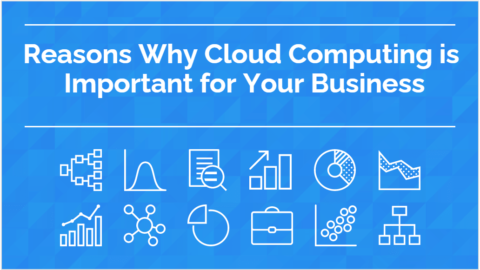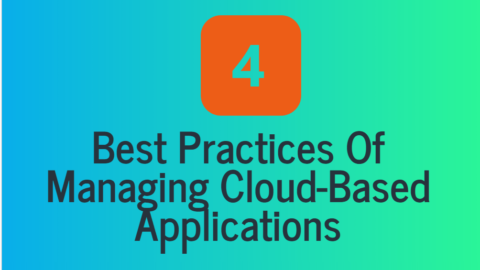Choosing the Right Cloud Migration Strategy
As this trend for cloud computing continually grows, organizations in every corner of the globe are finding themselves increasingly considering shifting their operations from in-house servers to full cloud systems. Moving from on-premise systems to fully cloud migration can be a transformative event for an organization in terms of scalability, efficiency and cost savings. Many important considerations have to be taken into account when selecting an appropriate cloud migration strategy. This blog post will discuss different strategies available about your choice. And how you can make informed decisions about what is best suited for your specific needs. In addition to this, we’ll look at how the offering of Workflow better accompanies well-executed migrations both as part of our native solution or stand-alone SaaS products. So without further ado—let’s look at the interesting opportunities of migrating to the cloud platform!
Table of Contents
Understand the Benefits of Cloud Migration
Cloud application migration is rapidly emerging as a critical issue in the IT sector and for good reason. The shift of existing operations to the cloud provides businesses with many benefits-improved mobility, enhanced scalability, increased security, and reduced costs to name only a few. Cloud solutions allow companies to access data and applications anywhere, anytime which translates into more efficient remote collaboration besides increasing productivity.
The cloud also offers free unlimited storage as well as computing power hence organizations can scale their operations with ease to meet changing demands without worrying about running short of resources. By ordering cloud migration consulting services, businesses can be sure that protecting their sensitive information is better off than if it was stored on-premise. In general, a move to the cloud would represent a giant stride for businesses looking to cut back operations. And reduce costs while at the same time enjoying access to cutting-edge technology.
Identify Your Business Needs and Goals
For success as an entrepreneur or a business owner, defining your needs and achievements as a business is important. Before coming up with the idea of a business plan or implementing any cloud migration strategies, take time to define what it is that you want to accomplish and how things need to be done. That includes both short-term and long-term goals along with identifying any challenges or obstacles that can surface. Knowing what your business needs are such as resources, staffing, and financial requirements will also assist in developing an actionable plan Whether you are just starting out or simply looking to grow your business, a clear understanding of what you hope to accomplish and the needs that drive those goals is essential in making informed decisions and ultimately attaining success for migrating to the cloud.

Analyze Your Existing Workflow and Data Structure
As your business grows, you must analyze your workflow and data structure to ensure that your operations run smoothly. By carrying out proper analysis, you can identify areas where improvement is necessary. So that you can optimize your efficiency and productivity. Through this process, it will help you in uncovering redundant tasks, obsolete processes, and data discordance. This may be resulting in the slowness of your workflow. With the right toolkit and strategies in place, you can make things streamlined as far as operating goes and come up with an organized data structure fitting for changing business needs. Take the time to analyze your workflow and data structure and reap the benefits of a more streamlined operation.
Select a Cloud Platform That Best Fits Your Requirements
When considering the various cloud migration platforms, it can be overwhelming with the number of alternatives. However, taking an in-depth look at what you need makes the process much easier than maybe you would imagine. Consider things such as scalability, cost, security, and types of workloads that you expect to run on your system. Each of these attributes suggests a strong point in favour of every cloud platform. But not all are equal either way. Popular selections include Amazon Web Services, Microsoft Azure, and Google Cloud Platform. Do your homework, ask questions, and don’t be afraid to seek expert help. For the the right cloud platform will get you on your way to success in no time.
Assess Security and Compliance Requirements
In evaluating the security and compliance requirements of a business, there are a few factors to remember for migrating to the cloud. Any possible risks should be identified so that a mitigation plan can be devised. Compliance requirements will vary depending on the industry as well as the location of any given business. Hence proper research is an absolute must and welcome changes are always present in every aspect of life. Moreover, constant audits and assessments must be in action since maintaining ongoing compliance and security remains key. Overall, enough time is necessary in ascertaining security and compliance requirements for safeguarding not only the business itself but also its customers too.

Plan for a Smooth Transition to the Cloud Migration
As more and more businesses in favour of cloud-based systems move in, a transition to the cloud will help facilitate your operations. As well as make your business consistent. Adopting a new system brings with it its unique set of challenges. For this reason, planning and having time to assess your needs and selecting the right cloud provider as well as services dealing with different training for employees on how to use the new system is important at hand. Do it before finalizing things like having a backup plan just in case anything comes up concerning the transition process. With the right planning and due preparation, moving applications to cloud can be a smart and seamless decision for your business.
How do I choose a cloud migration strategy?
When choosing a cloud migration strategy, consider factors such as the complexity of your applications, data compliance requirements, desired timeline, and available resources. Assess the benefits and risks of strategies like lift-and-shift, re-platforming, or refactoring, and select the approach that best aligns with your specific needs and goals.
What are the 7 cloud migration strategies?
The seven cloud migration strategies, commonly referred to as the “7 R’s,” are:
- Rehosting or lift-and-shift
- Replatforming or lift-and-tinker
- Repurchasing or drop-and-shop
- Refactoring or rearchitecting
- Retiring or sunset
- Retaining or revisit
- Reskilling or retrain
These strategies represent different approaches to migrating applications and infrastructure to the cloud, offering varying levels of effort, cost, and transformation. Organizations choose the strategy based on their specific needs and objectives.
Summary: How to Develop a Cloud Migration Strategy?
This cloud migration quickly becoming a need for them all. It is imperative to take the necessary steps towards making this successful. Not only should you understand the reason behind migrating towards the cloud and identifying your business needs and goals but also analyzing your existing workflow and data structure before selecting a platform that best suits your requirements. Moving forward even further to review any security and compliance risks will follow after this. Finally, developing such a comprehensive plan will help me ensure that this process does not skip a single note. Knowing what steps are there in cloud migration can be a bit intimidating at times. However, if you use this roadmap, you will have everything you need for an efficient transition and also for a secure one.

Adhar Dhaval is experienced portfolio, program and project leader with demonstrated leadership in all phases of sales and service delivery of diverse technology solutions. He is a speaker sharing advice and industry perspective on emerging best practices in project leadership, program management, leadership and strategy. He is working for the Chair Leadership Co.










